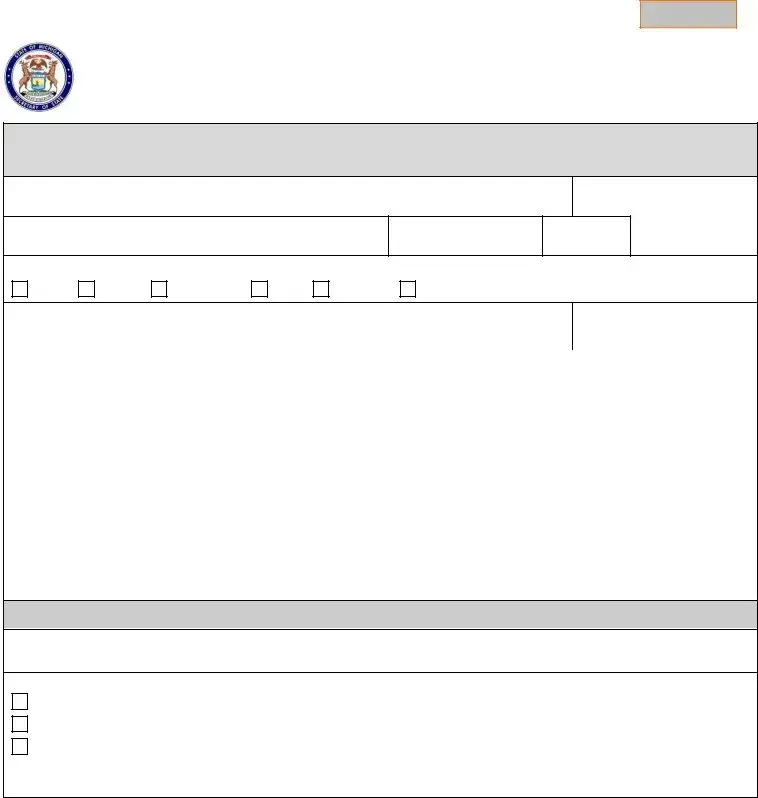Completing the Michigan A 226 form requires careful attention to detail, yet some individuals may inadvertently make errors during the process. One common mistake occurs when applicants overlook the importance of completely filling out Section A. This section is mandatory for all requests, and leaving fields, especially those marked with an asterisk (*), blank can lead to the immediate rejection of the application.
Another frequent oversight is failing to specify the method of payment initially used for the transaction in question. The form offers multiple options, including cash, check, credit card, EFT, e-check, or other. Providing this information accurately is crucial because it enables the department to process the refund effectively to the original payment source, when possible.
The requirement for a detailed explanation under the "Reason for Requesting Refund" section is often inadequately addressed. Applicants tend to provide vague or incomplete explanations, which complicates the assessment process. It is vital to describe the circumstances surrounding the refund request comprehensively to facilitate a smooth evaluation by the department.
For title refunds in Section B, a common mistake is the failure to submit a copy of the title application form TR-11C. This document is essential for processing title refund requests and its absence can delay or negate the refund process.
Applicants sometimes inaccurately report or omit the Vehicle Identification Number (VIN), make, and year, especially in Section B for driver's license, state identification card, driver reinstatement fee, or title refund requests. This information is crucial for identifying the specific case and processing the refund efficiently.
In Section C, dealing with license plate, tab, snowmobile, and watercraft refund requests, individuals often miss indicating their reason for requesting a refund. Checking the appropriate reason and providing necessary documentation, such as the original registration or a death certificate if applicable, are pivotal steps that are occasionally overlooked.
Incorrect mailing of the completed form and supporting documents is another common error. The form delineates specific mailing addresses based on the type of refund being requested. Mixing these up can result in significant delays in processing the refund request.
Last, individuals frequently underestimate the importance of proof of payment. The form requires an original validated document from the Department of State indicating the amount paid. Neglecting to include this proof can result in an unsuccessful refund request, as the department has no basis to confirm the original transaction.

